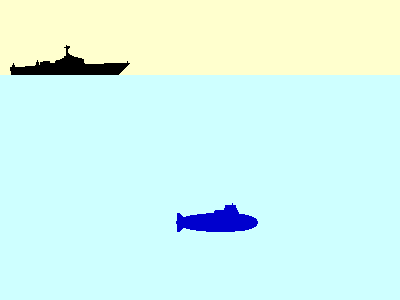Tutorial: Sonar
Sonar (sound navigation and ranging) is a technology that uses acoustical waves to sense the location of objects in the ocean. The simplest sonar devices send out a sound pulse from a transducer, and then precisely measure the time it takes for the sound pulses to be reflected back to the transducer. The distance to an object can be calculated using this time difference and the speed of sound in the water (approximately 1,500 meters per second). More sophisticated sonar systems can provide additional direction and range information. Sonar was developed during World War I as an aid in finding both submarines and icebergs. Major improvements were made on this technology during World War II, and eventually scientists adapted the highly sensitive equipment for use in oceanographic research.

Active sonar. Copyright University of Rhode Island
This recording is of an active sonar that is tracking a close target. Sound courtesy of J & A Enterprises.
There are two types of sonar: active and passive. Passive sonar is a listening device only; sound waves produced by another source are received and changed into electrical signals for display on a monitor. Active sonar, on the other hand, sends out sound waves in pulses; scientists then measure the time it takes these pulses to travel through the water, reflect off of an object, and return to the ship. Because scientists know how fast sound travels through water, they can easily calculate the distance between their ship and the object they are interested in, such as a ship or animal. They can also use the return echo to identify the object that the sound reflected off of. Whales, dolphins, and bats use echolocation, a natural type of sonar, in order to identify and locate their prey. These animals emit “clicks,” sounds that are reflected back when they hit an object.